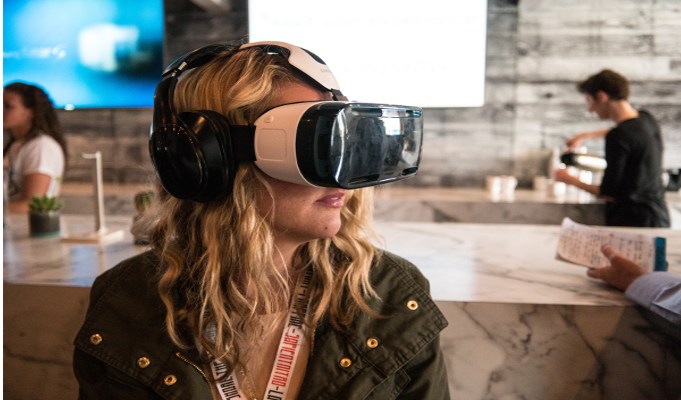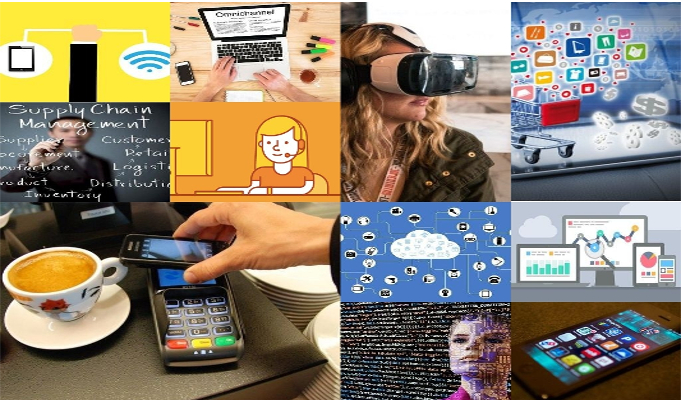Retailers and brands are embracing technology in a big way to drive a seamless user experience in an effort to blend in with the increasingly digital world and provide convenience and benefits to the consumer.
Indian Retail Industry’s top CIOs and CTOs, the visionaries responsible for the technological direction any organisation takes, share the retail trends of 2018:-
1. EVOLUTION OF SMART CENSORS
In comparison to brick-and-mortar stores, online e-commerce portals discovered the value of in-depth shopper analytics much earlier. T e physical stores realized the importance of this data quite late, which was always available at their door step all the time. With help of technology, retailers are keeping a record of shopper likes and dislikes, subjectivity and inability to scale. Unlike online platforms where it is easy to keep a record of consumer behavior through cookies and IP addresses, in physical stores sensors implement a systematic way to collect data. Some sensor technologies include:
Video: Video is the most fundamental and original sensor technology which has been in business since a long time. Video sensors – in addition to visible light from the camera – convert the footage into data. Recorded videos are stored and viewed later with qualitative reasoning to determine the nature, choice, taste of a consumer. Reactions and exact movements of consumers, as well as the time they spend in front of different products available at the stores are also recorded. This helps in getting a precise idea of traffic in front of products, engagement measurement,shoppers’ path analytics as well as other valuable demographics. It also provides video management for loss prevention and enables qualitative understanding through video observation.
Wi-Fi: Wi-Fi also acts as a distinctive sensor aspect as far as smart sensor technology goes. Most mobile devices regularly emit a WiFi signal, even when not connected to a store’s Wi-Fi network. Essentially, the phone sends out a blip every so often seeking networks to potentially connect with. Those blips contain an identification marker, allowing a Wi-Fi access point to associate that marker to a unique mobile device. If connected, the sensor can leverage web browsing behavior to enhance inventory management. In reverse scenario, the sensor determines whether it has seen the marker before, signaling the device as a returning guest.
Beacons: A beacon is a tiny and inexpensive wireless technology that helps in continuous broadcasting. Beacons look to connect with a specific mobile app on the shopper’s phone which recognizes the beacon and its signal. Sometimes mobile apps need to be opened and running on a shopper’s phone, while at other times, the beacon can ‘awaken’ the app and connect. If and when the connection is made, the app sends data to the cloud, allowing the retailer to garner shopper insights like store visits, location within the store. Beacons are completely dependent on a shopper’s opt-in with an app andare very accurate.
Bluetooth Low Energy (BLE): Bluetooth LE has a medium range – generally more than a video camera and does not require line of sight. They are small and inexpensive and are quite accurate when deploying a sufficient number of sensors. However, for purposes of employee exclusion, a store must deploy dedicated Bluetooth sensors that are not multi-use for other applications, like shopper engagement.
Radio Frequency Identification: RFID has proven to be a fantastic solution for inventory management, which allows retailers and brands to control their entire end-to-end processes, to examine their supply chains, from factory to shipping dock, from warehouse to store. RFID tags containing a unique identifi er are attached to every SKU of merchandise, and RFID readers are deployed, either fixed in the ceiling or perhaps handheld, and often also integrated into POS terminals. RFID provides a solution to all sorts of questions which is frequently asked by the staff at the backend. The key benefits are to provide precise and accurate item location tracking, auto identification with no manual help needed.
2. MOBILE TECHNOLOGIES
Thanks to mobile devices like smartphones and tablets, consumers today have a ready access to all kinds of digital information when and where they need it be it shopping, dining or travelling. Retailers are bound to create delightful, customised and Omnichannel shopping experiences for buyers. For business leaders staying on top of the latest developments and overall, mobile and technology trends plays a very important role.
3. OMNICHANNEL EXPERIENCE
Omnichannel experience is no longer just a buzz word. It is the need of the hour, the one thing which will pretty much ensure success for a retailer. Consumer demands are very specific these days and to fulfill them a brand has to be Omnichannel in its approach. It has become critical for retailers to build a seamless and an easy shopping experience, not just to acquire, but to retain customers as well. Around 45 percent of Millennials make purchases through e-commerce platforms like Amazon, and Flipkart. This is a sure sign of the fact that they spend plenty of their time on their mobile devices, checking out offers and other details.
4. M-COMMERCE
M-commerce has been a major contributor in the revenue generated by the global app economy, an economy whose number is expected to reach a whopping US $6.3 trillion by 2021. For retailers it has been proven by research that mobile app drives more engagement. A normal person spends an average of seven to nine hours on the phone in a day. As a result, mobile apps dominate the overall Internet traffic and generate around 3X more conversions in comparison to the web. Mobile users are used to simple UI and faster loading speeds, owing to the experience they get on the extensively used social media and messaging apps, something which bigger retail chains are striving hard to provide. Brands are using M-commerce to pamper their customers with personal service that inspires loyalty and appeals to shoppers’ emotions.
5. MOBILE PAYMENT AND DIGITAL WALLET
When it comes to mobile apps, digital wallets and in-app payments have made life easier for the user. They provide a convenient yet secure checkout option by moving away from hard cash to virtual money. App payment in retail has witnessed non-stop growth and rise since its commencement in 2015.
6. LIVE CHATS
Live chat assistance can help retailers in providing solutions to consumers with real time assistance. Live chat app solutions have the highest satisfaction level for any customer service channel, with a 73 percent approval rating.
7. IOT AND CLOUD
The Internet of Things (IoT) connects the physical world to the Internet so that one can use data from devices to increase productivity and efficiency. Consumers have a plethora of connectivity options available in the market at minimal costs. All kinds of things are being used in IoT applications including consumer products such as refrigerators, security cameras, and cable set-top boxes; industrial systems such as conveyor belts and manufacturing equipment; and commercial devices such as traffic signals and smart meters. IoT continues to evolve and expand in terms of the number of companies, products, and applications that illustrate just how beneficial it is becoming to connect our devices, appliances, homes, and vehicles together.
8. MACHINE LEARNING AND ARTIFICIAL INTELLIGENCE
Artificial intelligence (AI) helps machines and devices learn from experience, adjust to new inputs and perform human-like tasks and intelligence. From Chess-playing computers to self-driving cars and Bots assisting people in their work in retail outlets, AI has been the major change for a lot of industries in the past decade. In retail, AI can be used to train computers to accomplish specific tasks by processing large amounts of data and recognizing data patterns. It is used in e-commerce platforms, chatbot services and social media apps. Similarly, machine learning uses pattern recognition to predict data based on algorithms. AI is being deployed by businesses to create websites, social media posts, run email marketing campaigns, optimise content for different consumer segments. It is helping brands become more agile in their communications, as well as more responsive to consumer demands, as and when they change.
9. SUPPLY CHAIN INTEGRATION
A supply chain is a collection of suppliers required to create product for a company. Each supplier is an important link in the chain that adds time and monetary costs. Supply chain management is the collection of methodologies, theories, and practices that go towards keeping a supply chain running and improving its efficiency for the benefit of most, if not all of the links. The major stages of supply chain integration mainly are customer analysis, supplier partnering, inventory management and control, demand and lead time management, materials management, manufacturing and remanufacturing analysis, storage and transportation thereby resulting in order fulfillment. ERP plays a major role in completing this chain inorder to fulfill orders in bulk. ERP systems track business resources – cash, raw materials, production capacity – and the status of business commitments: orders, purchase orders, and payroll. Th e applications that make up the system share data across various departments (manufacturing, purchasing, sales, accounting, etc.) that provide the data.
10. AUGMENTED REALITY AND VR

AR in retail isn’t all that new, with brands using it successfully since 2013. It is popular and successful as it delivers a simple, intuitive, high-value user experience for consumers. Th e simple way to understand is that with AR, one can easily with the help of his smartphone and can find out exactly how far s/he is from a shopping mall or a restaurant. The adoption of AR acts as an invaluable tool for retailers by providing insight and information supporting consumer buying decisions. Using AR applications to layer digital information — text, images, video and audio-on top of the physical world — represents an easy route to deeper engagement, both in-store and at-home. In addition to this VR not only create a simulated environment around but also provide other tactile sensations to give the consumers an absolute life experience.
11. BIG DATA AND BLOCKCHAIN

Simply put, Big Data drives towards a better customer experience. The customer experience is more important than ever as retailers struggle to differentiate themselves in an increasingly challenging market. But how retailers implement that customer experience is shifting from a purely person-to-person approach, to something much more automated – but when done right, those automation tools supplement and enhance the human approach, delivering a vastly superior, and much more personal, customer experience. Blockchain makes retailers more efficient. While most people associate Blockchain with cryptocurrencies and Bitcoin, its greater potential is in back-end applications that improve retail operations. Bajaj Electricals Ltd. has eliminated the manual steps involved in the company’s bill discounting process with the use of blockchain/hyperledger and the entire transaction has become paperless.







